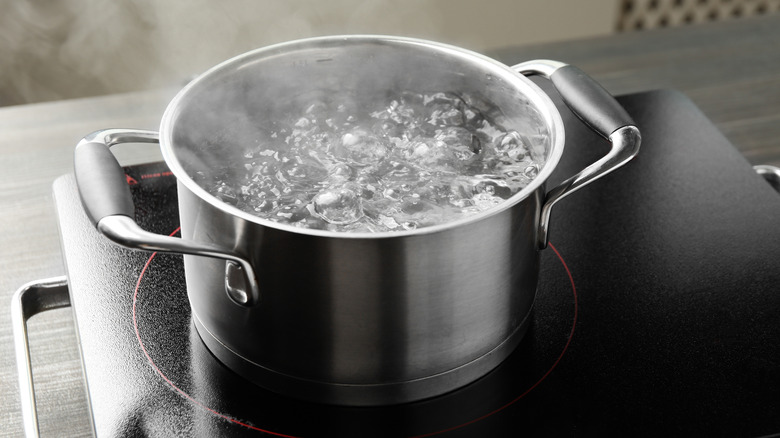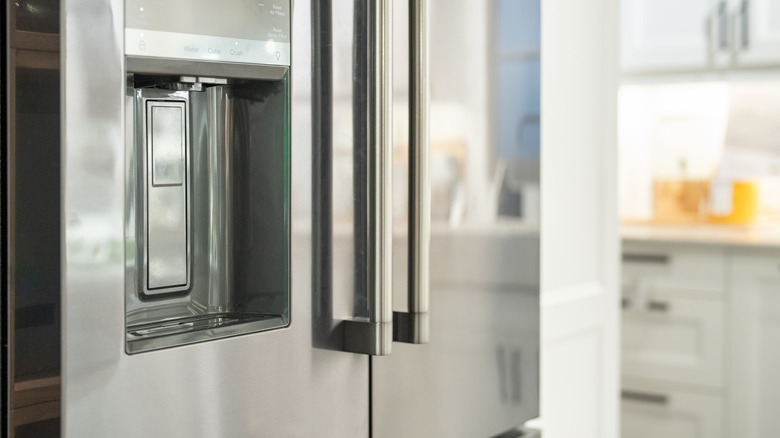How To Safely Use Water In Your Home During A Boil Water Advisory
A boil water advisory alerts residents and businesses that a contaminant has been discovered in the community's water supply. Generally, these pollutants are bacteria like E. coli, parasites, or carcinogenic chemicals like arsenic and lead that make the water unsafe to drink, even if it's filtered. Your local jurisdiction will warn you if a boil water advisory is in effect, using phone alerts, news bulletins, posting on their website, or by whatever way your jurisdiction deems appropriate. As the name suggests, it is possible to safely use water during a boil water advisory after taking a few precautions, including by boiling drinking water for at least one minute below 6,500 feet altitude and for three minutes at higher elevations. Even if you have a boiling water tap in your kitchen, you need to boil the water for one to three minutes.
Bringing tap water to a full, roiling boil for the recommended length of time should neutralize the contaminants for humans and pets. Keep the boiled water in the fridge, covered, for drinking and cooking, or consider keeping commercially bottled water on hand for use in emergencies. Experts recommend that men drink about 3.7 liters a day and that women drink 2.7. Your pet's needs vary by its size, level of activity, and type. Technically, bottled water has an indefinite shelf life, but after six to 12 months the taste might change. If this matters to you, use it and replace it with a fresh supply.
Staying safe during a boil water advisory
You'll also need boiled water for brushing your teeth, preparing baby formula, handwashing, making ice, or any other activity where contaminated water could enter your bloodstream. If, for instance, you have a wound you need to keep clean as it heals, use boiled water. If you find the flavor of boiled water distasteful, aerating it by pouring it back and forth between two bottles or adding a pinch of salt may improve the taste. It's safe to use untreated water when you bathe, as long as you don't swallow any water. Your houseplants are unlikely to suffer if you use tap water, but if you're growing fruits and vegetables, take care not to splash them with untreated water. If you do, don't harvest them until they've had four days in the sun.
It's safe to do your laundry with untreated water, but you should take some precautions with dishwashing. Use the sanitize cycle and the rinse cycle if the water reaches 150 degrees Fahrenheit. It doesn't matter if you use dishwashing pods, liquid, or powder detergent. If your dishwasher doesn't meet these requirements, wash and rinse your dishes by hand in hot water and then soak them in water treated with bleach. Let them air dry to reduce the risk of transferring contaminants from a towel to the dish. Your water department may or may not recommend that you flush your pipes after a boil water advisory. Even if they don't, make sure any contaminated water has cycled out of your fridge's water dispenser or your ice maker before using ice. This typically takes three cycles. Consider using this downtime as an opportunity to clean your ice maker.

